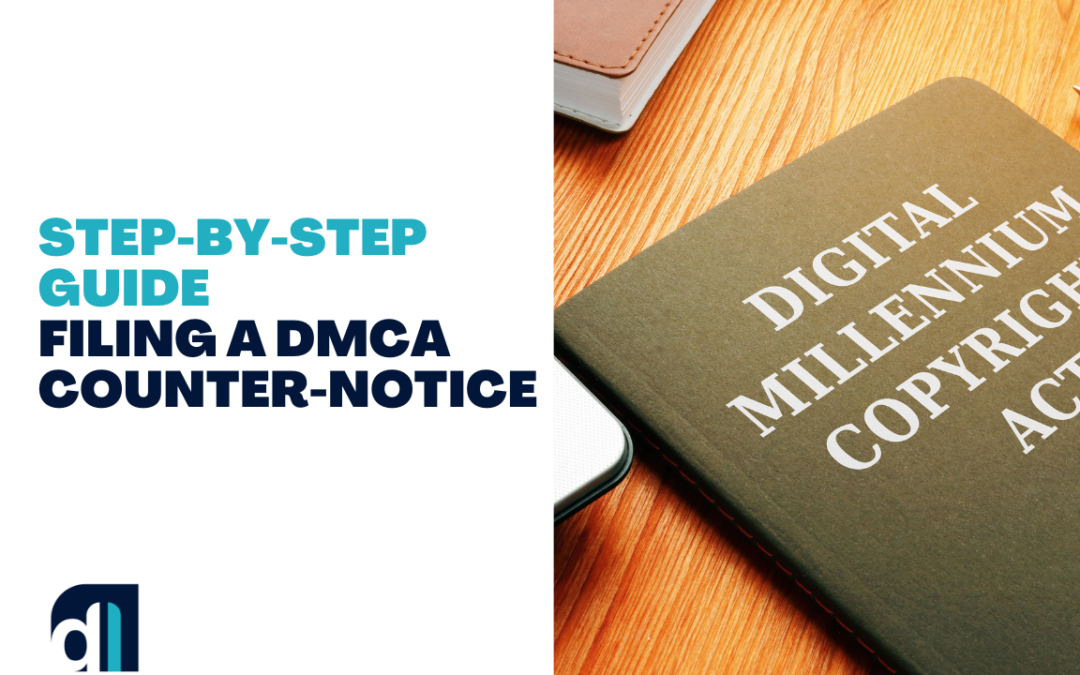Received a DMCA takedown request? Don’t panic! This step-by-step guide will walk you through filing a DMCA counter-notice and getting your content back online.
DMCA takedown notices can be stressful, but counter-notices can get your content back online if wrongly accused. By filing a DMCA counter-notice, you can challenge the validity of the takedown and potentially have your content restored. This guide will walk you through the steps of filing a counter-notice.
Understand the DMCA and Your Rights.
Before filing a counter-notice, it’s essential to understand the Digital Millennium Copyright Act (DMCA) and your rights as a content creator. The DMCA provides a safe harbor for online service providers (OSPs) who host user-generated content, protecting them from liability for copyright infringement committed by their users. However, it also provides a mechanism for copyright owners to request the removal of infringing content through a DMCA takedown notice. As a content creator, you can challenge the validity of a takedown notice by filing a counter-notice.
You can learn more about a DMCA takedown request by going HERE.
Review the Takedown Notice and Identify the Infringing Content.
The first step in filing a valid DMCA counter-notice is to carefully review the DMCA notice you received and identify the specific content that is being claimed as infringing. This may include text, images, videos, or other types of content. It’s essential to be as specific as possible in identifying the claimed infringing content, including URLs or additional identifying information. Remember that if you file a counter notice for content that is not infringing, you could be subject to legal action.
Draft a Counter Notice that Includes Specific Information.
Once you have identified the content claimed as infringing, it’s time to draft your counter-notice. Your counter-notice should include specific information, such as your name, address, and contact information, as well as a statement that you have a good faith belief that the content in question was removed or disabled due to a mistake or misidentification.
You should also include a statement that you consent to the jurisdiction of the federal district court in which you are located and that you will accept service of process from the person who filed the original takedown notice or their agent. Finally, you should sign the counter notice under penalty of perjury, certifying that the information you have provided is accurate and that you are authorized to act on behalf of the owner of the content in question.
Submit the Counter-Notice to the Designated Agent.
Once you have drafted your DMCA counter notice, it’s time to submit it to the designated agent of the online service provider that removed your content. This information should be included in the takedown notice you received. You can typically submit your counter notice via email or regular mail.
Be sure to keep a copy of your counter notice for your records. The online service provider will have 10-14 business days to notify the person who filed the original takedown notice that you have filed a counter-notice. They may restore your content if they do not receive notice of a lawsuit within that time frame.
Wait for the Copyright Owner to Respond and Take Further Action if Necessary.
After submitting your DMCA counter-notice, you must wait for the copyright owner to respond. They have 10-14 business days to notify the online service provider that they have filed a lawsuit against you to keep your content offline. The online service provider may restore your content if they do not take further action.
However, if the copyright owner files a lawsuit, you must seek legal counsel to defend yourself. It’s important to note that filing a false DMCA counter-notice can result in legal consequences, so ensure you have a valid reason for disputing the takedown notice.
Submitting a DMCA counter-notice can be a complicated process and could expose the content creator to legal action from the complainant. It is advisable to seek the guidance of an Intellectual Property Attorney when filing a counter-notice. If you have received a DMCA takedown notice and need help determining your next course of action, please schedule a free introductory call.

Sahil Malhotra
Sahil Malhotra is an Intellectual Property Attorney, who founded Drishti (“vision”) law because of his vision in protecting dreams and ideas.
He provided individuals and small businesses with an opportunity to enhance their IP’s value by helping them register trademarks and successfully argue against office actions. In addition to his training and experience, he has been deeply involved in the multifaceted IP portfolio at UIC and continues to be associated with IP organizations and conferences.
To know more about Sahil Malhotra — Click Here
You may follow Sahil Malhotra on Facebook: Sahil Malhotra and on Instagram: @Sahil Malhotra

